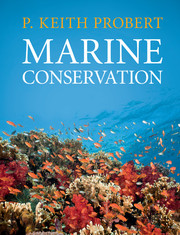Book contents
- Marine Conservation
- Marine Conservation
- Copyright page
- Dedication
- Contents
- Preface
- 1 Marine Environments
- 2 Human Impacts
- 3 Conservation
- 4 Species Conservation
- 5 Fishing
- 6 Fishes
- 7 Marine Turtles
- 8 Seabirds
- 9 Marine Mammals
- 10 Coastal Waters
- 11 Estuaries and Lagoons
- 12 Coastal Wetlands
- 13 Coral Reefs
- 14 The Deep Sea
- 15 Marine Protected Areas
- 16 The Mediterranean Sea
- 17 The Southern Ocean
- 18 Epilogue
- Book part
- Index
- References
4 - Species Conservation
Published online by Cambridge University Press: 13 July 2017
- Marine Conservation
- Marine Conservation
- Copyright page
- Dedication
- Contents
- Preface
- 1 Marine Environments
- 2 Human Impacts
- 3 Conservation
- 4 Species Conservation
- 5 Fishing
- 6 Fishes
- 7 Marine Turtles
- 8 Seabirds
- 9 Marine Mammals
- 10 Coastal Waters
- 11 Estuaries and Lagoons
- 12 Coastal Wetlands
- 13 Coral Reefs
- 14 The Deep Sea
- 15 Marine Protected Areas
- 16 The Mediterranean Sea
- 17 The Southern Ocean
- 18 Epilogue
- Book part
- Index
- References
- Type
- Chapter
- Information
- Marine Conservation , pp. 86 - 107Publisher: Cambridge University PressPrint publication year: 2017



